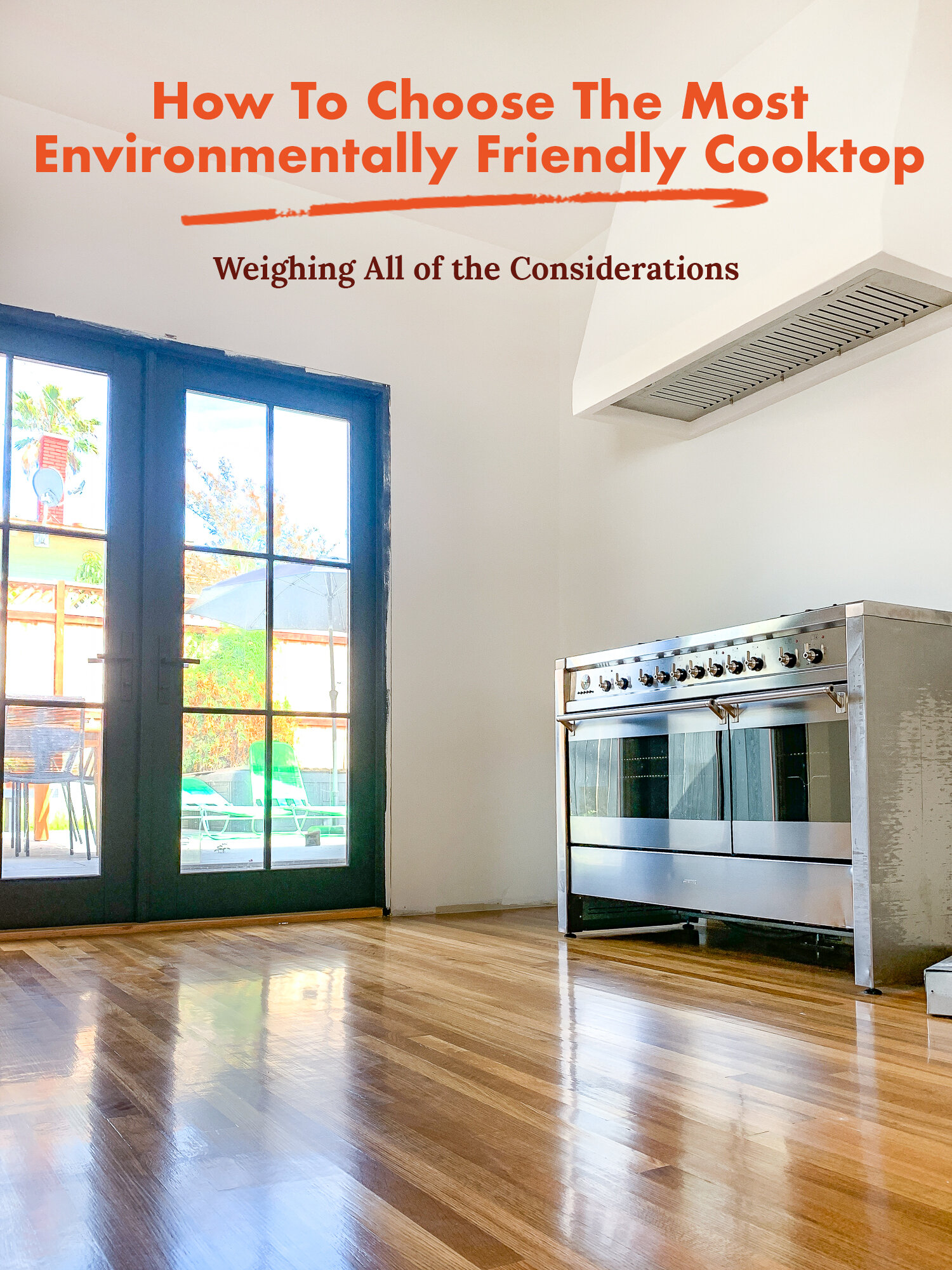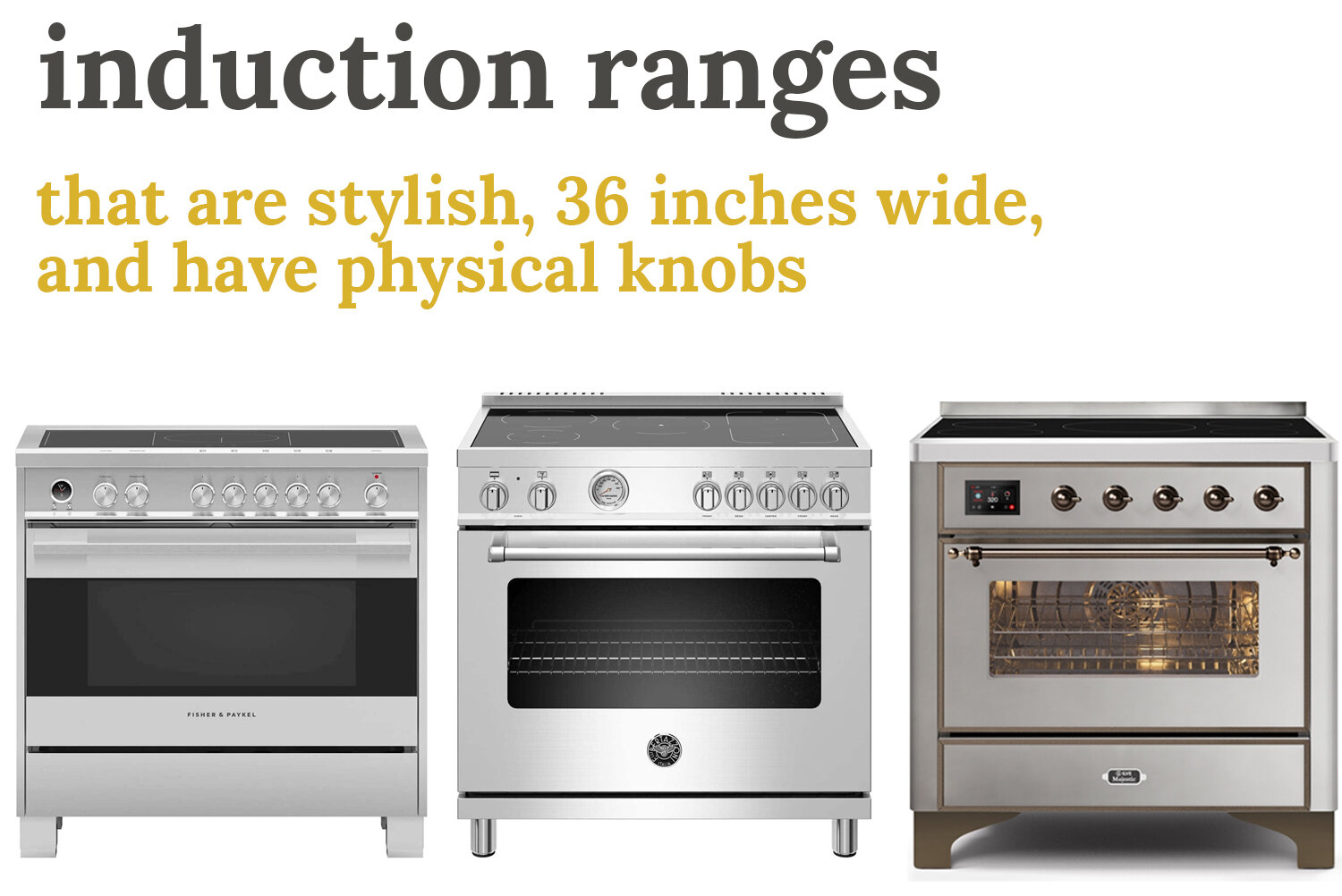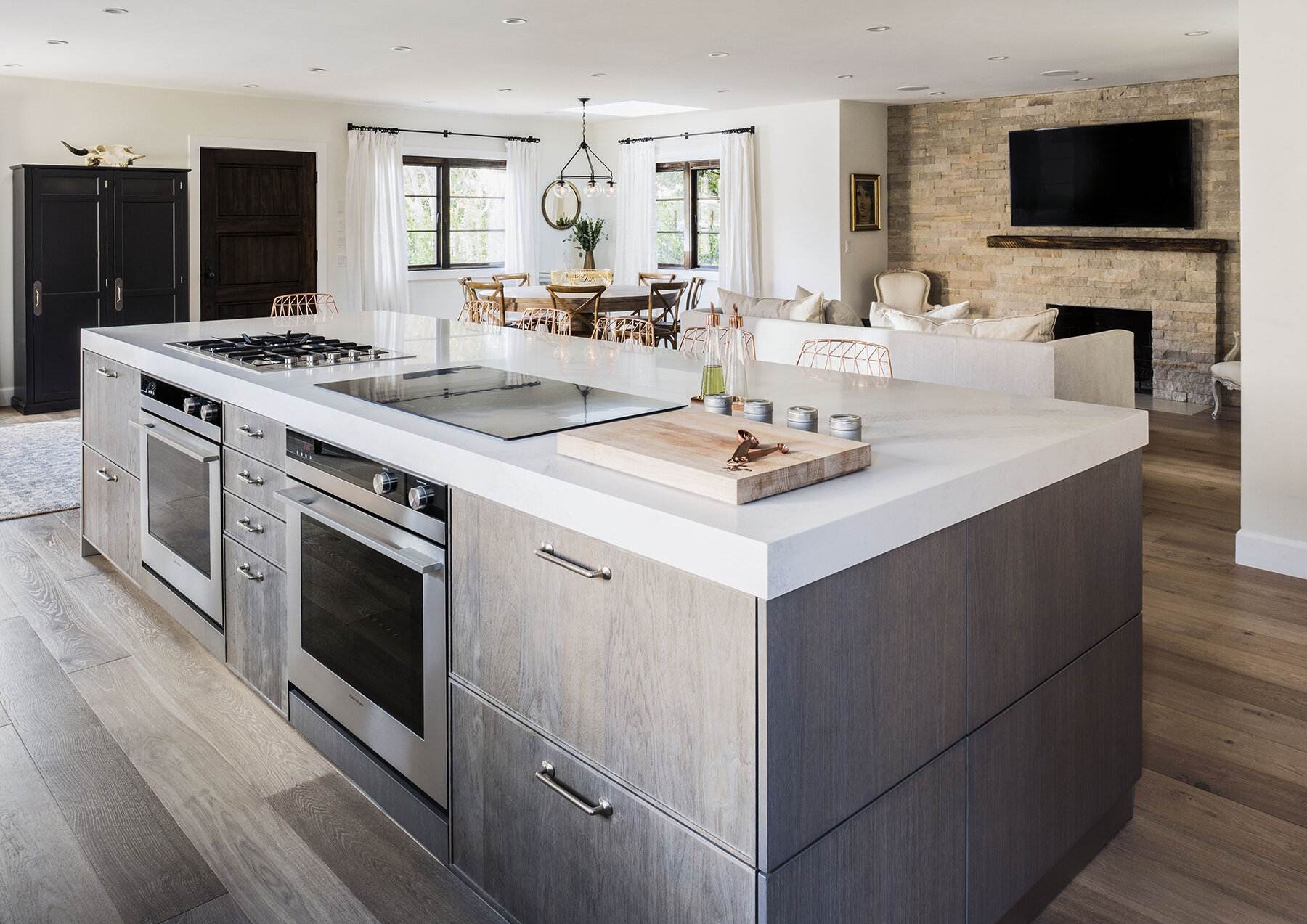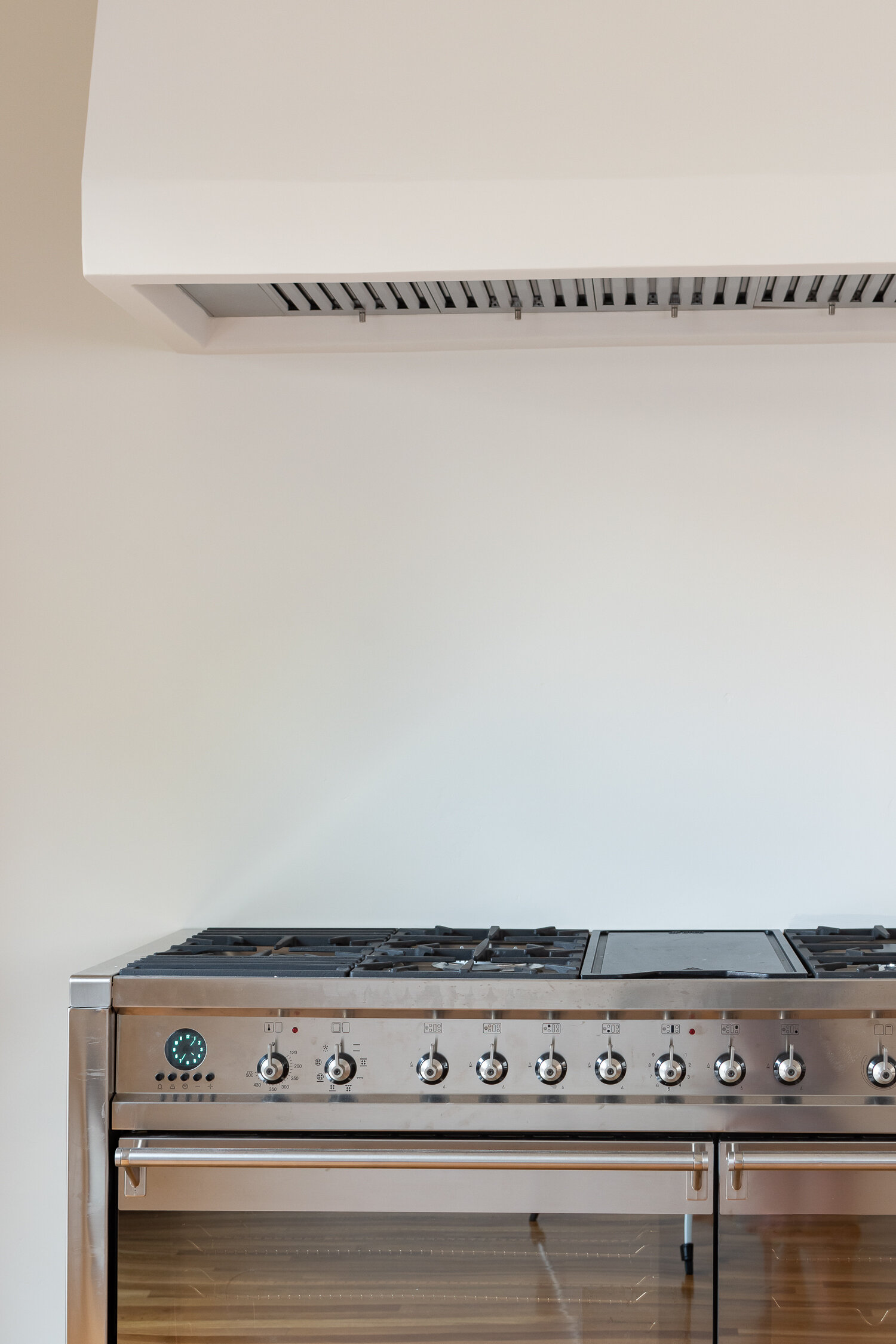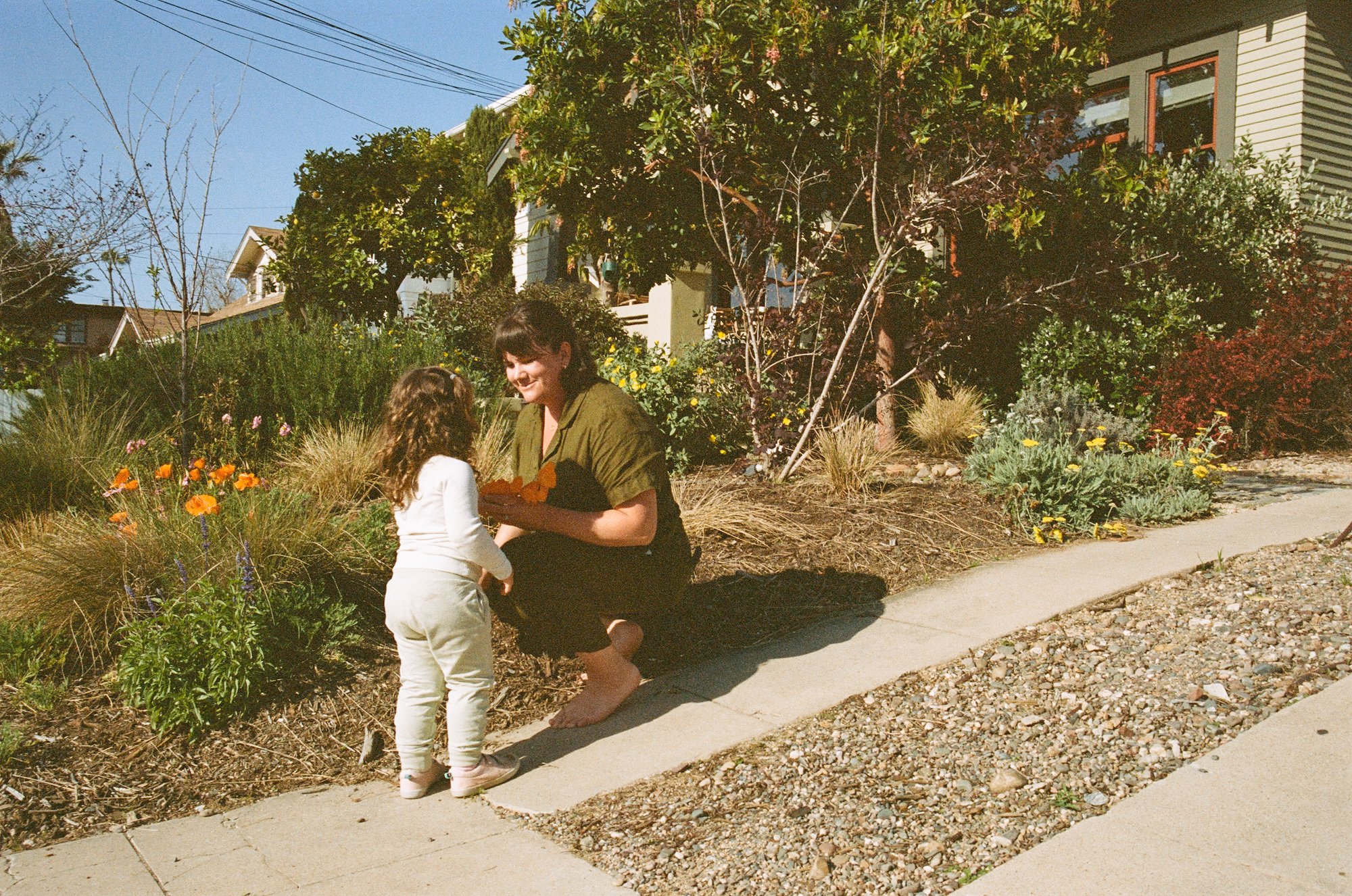Choosing The Most Environmentally Friendly Cooktop - Weighing All(!) of the Considerations
/With concerns for our planet and the folks that experience climate injustices, we’re all making purchasing decisions with ethics in mind. Appliances are no different. Electric and induction cooktops are becoming a popular environmentally friendly option, but I'm taking a hard look at all of the considerations to make the most conscientious choice.
To start, I’m going to point out that a lot of folks will skim past this post because they’ve read the talk around this topic that says induction is the way to go. But there’s more to consider - stick with me and stick to the end!
To summarize the discussion about environmentally friendly cooktops, I’ve referenced a couple of articles here:
New York Times - Your Gas Stove Is Bad for You and the Planet: To help solve the climate crisis, we need to electrify everything
“Burning gas is now a bigger source of pollution than burning coal, and nearly a third of that gas is burned in homes and commercial buildings.” Gas burns fossil fuels which adds to global warming. Electric appliances could be powered by renewable energy sources.
“As renewable energy displaces fossil fuels, the electric grid will get cleaner and cleaner.” Meaning, even if your energy utility is still burning coal to power your electronics, one day it could use wind, solar, geothermal, nuclear, etc. - all renewable energy sources.
Induction cooktops are the newest cooktop innovation taking the efficiency of electric cooking to another level with more precision and speed. They’re becoming popular even with pro chefs.
“Gas stoves throw off pollutants like nitrogen dioxide and carbon monoxide.”
“Scientists link gas stoves to asthma attacks and hospitalizations.” “Asthma is a rampant, discriminatory disease, hitting children and communities of color the hardest.”
USA Today - No more fire in the kitchen: Cities are banning natural gas in homes to save the planet
“Natural gas is a fossil fuel, mostly methane, and produces 33% of U.S. carbon dioxide emissions from electricity generation, according to the U.S. Energy Information Administration. Carbon dioxide is the primary greenhouse gas causing climate change.”
“‘There’s no pathway to stabilizing the climate without phasing gas out of our homes and buildings. This is a must-do for the climate and a livable planet,’ said Rachel Golden of the Sierra Club’s building electrification campaign.”
“Some the cities ban natural gas hookups to new construction. Others offer builders incentives if they go all-electric, much the same as they might get to take up more space on a lot if a house is extra energy-efficient.”
“Probably the biggest stumbling block for most pondering an all-electric home is the prospect of not having a gas stove.”
I read those articles, and this book, and countless other reports and writings about gas stoves and the future of cooking. I was on board! Electricity is the future!
I was sold on doing electric. I’d do an electric oven, and then pair it with an induction cooking element on top. It would be great with our rooftop solar panels! I did a deep dive researching induction technology, testing it at friends’ houses, and ultimately shopping for cooktops that would work. Unfortunately, most induction ranges don’t fit the criteria I was looking for. I wanted manual knobs, not digital. And I wanted a 36” or 48” wide range. Most all of the available induction ranges didn’t fit the bill. Unfortunately, even with induction on the move to becoming a popular replacement for a high-end gas range, there aren’t many on the market. They are much more popular in Europe, but the US has some catching up to do. But I did find a couple of them!
From left to right: Fisher & Paykel OR36SDI6X1 // Bertazzoni MAST365INMXE // ILVE UMI09NS3SSB (Ecosia those model numbers for more info if the links don’t offer them for sale)
All were fine options! But in my heart of hearts I actually wanted a 48” range with two ovens. I wanted a regular sized oven and a miniature oven for cooking small things because that’s way more energy efficient! And I’ve only ever found one 48” induction range sold in the US: the AGA. Then there is this 40” ILVE which comes close, but it wasn’t even available when I was shopping for ranges in 2019. Plus, 40” is a weird size that I worry wouldn’t be future-proofed. But anyway, I digress.
The challenge with induction cooktops and ranges is that they’re less available, and more expensive than gas stoves. Often double the cost of their gas counterparts. All of these ranges are about $7,000! This is more than I wanted to spend on an appliance. I spent MONTHS looking for these ranges at discount on eBay and scratch & dent shops.
Good thing I use Ecosia as my search engine, because I was planting real trees as I did all of my research. Really!
Source: @firstsenseinteriors
I was getting frustrated because I really wanted an induction. It felt like the future. It felt like the right thing to do. It felt like a no-brainer. It felt like the technology I wanted to promote on my blog! But the more I researched for a discounted one, the more I came to alternative conclusions. Hear me out!
There are SO many other things to consider when buying appliances (and products in general). Here’s what I think about when shopping.
1. Fuel Source
Electricity is the best choice here - in theory. The goal would be for it to be powered by a renewable resource day and night. But, there’s a chance that your utility company may never switch over from fossil fuels for years and you may not be able to put solar panels on your roof. That electric appliance may not be as potentially “green” as we hope it would be. It could be yet another appliance powered by fossil fuels, especially when left up to our power companies.
On that note, stovetops are relatively minimal energy hogs in a home. I mean, my stove is maybe on for an hour each day. But the heater could be running in a cold climate for months and months on end during the winter. Electric stoves account for only 2.8% of electric use in a residential home.
Psst: If you want to read more about cooking energy, consumption, cost and fun data details. This is a read for you.
2. Product Extraction and Production
Think all the way back to how the glass, aluminum, and electronics are extracted from the earth and produced. Who mined them? Who puts the components together? What are the working conditions for them like? Are their communities safe from contaminants? Are the factories cleaning up their waste properly? How polluting are their practices?
These questions are hard to answer sometimes. Many companies aren’t transparent about this.
If we can’t find an appliance company that practices ethical labor standards and clean environmental standards, the next best option is to buy used. The greenest thing is often what’s already been made.
There are sooooo many used ranges on the market. So many used high-end pro ranges! I went down this path for a long time and started communications with a local dude that restores old Viking ranges as a hobby. It was exciting to get a $15,000 range for $4,000! This option supports a circular economy, supports local craftspeople, and gets you a killer range for a fraction of the cost.
3. Shipping and Distribution
The ranges that I linked above are custom-made in Italy. The Ilve is even made-to-order and comes in the exact color combinations selected. Sounds fancy, right? Well, custom ordering something and shipping it across the planet uses a lot of resources. Sure, it could go on a big boat that would be coming over here anyway. But you do need to subtract some overall energy consumption from the energy gain of the electric cooker.
I shifted my focus to looking for appliances that were already local to me. Yes, they did use energy to get here initially, but I wouldn’t have to be adding more transportation into their carbon footprint.
4. Disposal
Unfortunately, we live in a linear economy that builds products to die, not be easily replaced, and then trashed. Those electric components are often the first things to go in appliances, and they’re the hardest to replace and repair. I worried that the life of some of these new, fancy, unpopular appliances wouldn’t last too long. The Bertazzoni especially had pretty bad reviews. Whereas those old Viking ranges are still being restored and loved for decades and decades. The mechanical components in the Viking ranges can be repaired, whereas the electronic components in the new ones aren’t as easily restored, and end up as toxic e-waste.
5. Actual Use
This idea really stuck with me: “what matters most in environmentally friendly cooking, isn’t the type of cooktop, but rather what you cook on top of it.” Cutting down on red meat and dairy from industrialized agriculture will significantly reduce your greenhouse footprint. You can learn more about how food has an effect on climate here.
Thought-provoking, right? Energy-efficient cooking goes beyond just a renewable fuel source! Our footprint extends so so so much further.
Ross and I eat mostly plant-based and try to buy from farmers that sequester carbon in soil and raise animals humanely. We aren’t perfect, but I’m confident that the more we move to support regenerative agriculture, the more we’ll make a positive environmental impact.
6. Alternative Investment
Lastly, the prices on those newfangled ranges is a lot to put towards an appliance. Instead, what if I put that extra $5,000 towards buying carbon offsets, donating to a carbon sequestration farm, giving back to communities affected by climate injustices, or any number of organizations working to lobby against the fossil fuel industry? Imagine how much more good could come from that!
We came to this realization a few years back when we added solar panels on our roof and considered getting a battery. That $11,000 battery full of future e-waste would only power our house for a couple of hours at night. But imagine that money going to a more community-minded regenerative investment! Talk about real change.
It’s also worth noting how high-priced “green” things limit folks of lower incomes. Not that this affects your individual purchase, but it’s always good to recognize privilege.
Chef Ludo Lefebvre’s Kitchen has both a gas and an induction cooktop
At the end of the day, I decided the best option for me would be to buy a local, used, discounted range with an electric oven and an electric or gas cooktop. Then, I’d put the savings towards a cause that makes more of a positive impact on the planet beyond the cooktop in my house.
The goal was to find a used induction range. I hunted everywhere for months and months. Ultimately, I had to just buy one. I couldn’t wait any longer because I needed to get cabinets made to fit the stove. I couldn’t order cabinets without knowing if the range would be 48” wide or 36” wide. Or if I’d ultimately find a killer deal on a separate oven and cooktop situation. I had to make a decision!
Unfortunately, there weren’t any used induction ranges in the size that would fit my kitchen. So, I bought the Smeg Opera A3XU6 range on eBay. (Note that it’s now been upgraded to the A3XU7 model which I linked to) It’s a dual fuel meaning the ovens are electric and the top is gas. It retails for $5,000 but I got it for $2,500 because it was dented. It was only a couple of hours away in Los Angeles, so it didn’t need to make a long trip to get here. We even drove Ross’ company truck which is a hybrid box truck rather than a typical gas truck. The range also has two ovens - one of which is small (but useful!) so it takes less energy to use.
Part of me feels like I failed, cheated, or made excuses out of getting the induction range. You might feel that way, too. But, I’m happy with this choice and this particular appliance.
I’m glad to have purchased a range that was already produced, didn’t need lots of additional transportation, is well-reviewed and should last awhile, came discounted to free up my financial climate efforts elsewhere, and has a small oven for efficient baking.
I’m disappointed that I couldn’t be an advocate for induction cooktops for years to come on the blog. But I’m proud of this post as a way of showing different ways to look at our purchasing power. And I’m happy to share with you that you don’t need to buy a $7,000 range to be an environmentalist. Saving the planet can be done cost-effectively - in fact, those that are saving the planet are doing so with fewer means, actually.
Even though my stove is gas, I do genuinely hope that induction cooktops become the future. I’m hopeful that more appliance companies make induction options in “pro” styles and sizes. I’m hopeful they will start selling them for comparable prices to the gas counterparts. I’m hopeful that they’ll be made ethically and with quality energy standards from extraction, to production, to consumer use. I’m hopeful!
So, while I’m heating a kettle on my gas cooktop, I’m writing to appliance companies asking for more efficient cooktops. And even more effective, I’m voting for candidates that will enact climate-focused initiatives that push appliance makers to create accessible and efficient products for everyone of all means. I truly think that’s the most environmentally friendly cooking I can do.
P.S. If you want to know about environmental refrigeration options, read up on that here and here.

